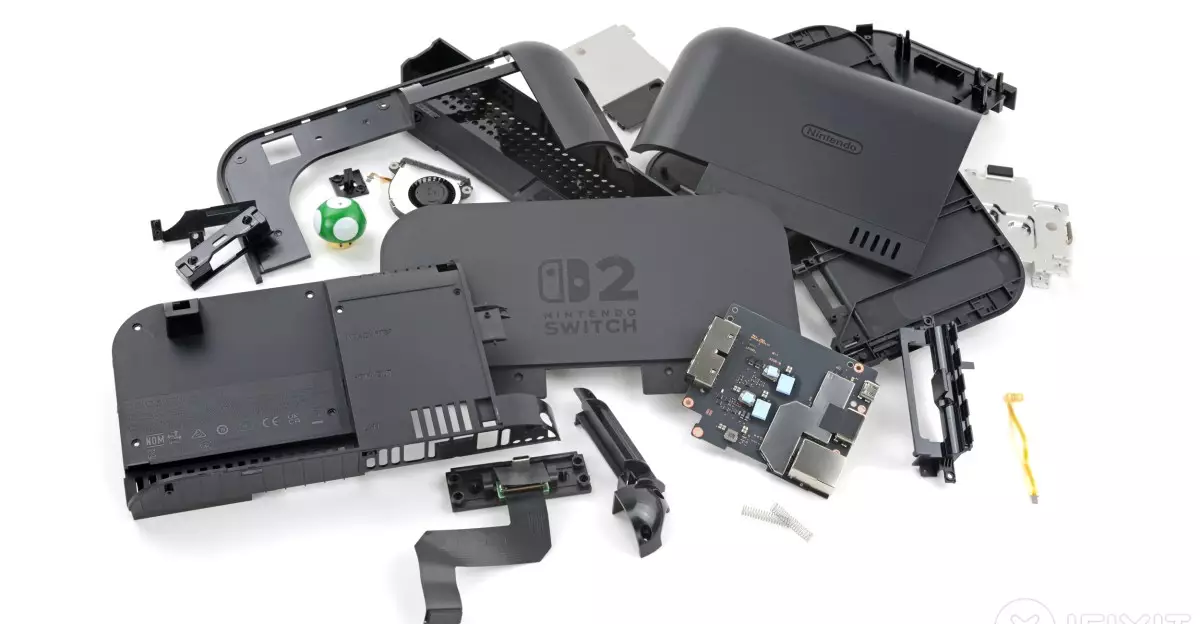Nintendo has long been a staple in the gaming industry, celebrated for its innovation and beloved franchises. However, a recent teardown by iFixit of the newly launched Switch 2 has illuminated a startling trend—while the company continues to usher in new generations of gaming consoles, it seems to neglect a critical aspect: repairability. With the Switch 2 receiving a paltry repairability score of 3 out of 10, this could signify a worrying shift towards creating devices that are more difficult to service and maintain, challenging the ethos of consumer rights in a technology-driven world.
The Deterioration of Repairability Standards
Historically, the original Nintendo Switch boasted a repairability score of 8 out of 10, which was later adjusted to reflect evolving standards, now sitting at 4 out of 10. While one could argue that improvements sometimes necessitate compromises in design, such a steep drop in the repairability score with the Switch 2 raises red flags. The very components that make up the console are not only more challenging to navigate but seem to deliberately hinder easy repairs.
Nintendo’s reliance on proprietary tri-point screws persists, making it exceedingly difficult for users to access vital internal components without risking damage. In essence, the design honors obscurity rather than user accessibility. The fact that debris from opening the console can damage hidden screws—covered by misleading stickers—only underscores this disturbing trend. This has significant implications for gamers who value sustainability and wish to extend the life of their devices.
The Disheartening Glued Battery
One of the more egregious examples of design choices that disregard repairability is the Switch 2’s battery, which is affixed with “powerful adhesive.” iFixit described removing it as an “absolute mission.” This is particularly disconcerting when we consider how battery life deteriorates over time. Making an essential component so difficult to replace is a clear disservice to consumers who may find themselves in need of a simple battery swap, especially in 2025’s evolving electronic ecosystem where sustainability matters.
Moreover, the process of removing the battery is noted to cause additional damage—an especially concerning issue for those advocating for a circular economy. A focus on making devices easier to repair and maintain is not only good business practice; it’s a fundamental responsibility of tech companies in the modern age of environmental awareness.
The Impeded Accessibility to Parts
Nintendo’s history of withholding repair parts and manuals only complicates the issue further. Mr. Liszewski highlights that even for the original Switch, no official repair documents were made available, compelling users to seek third-party options—an often unreliable and uncertain path. It is unfathomable that a company with such an influential footprint in the industry does not fully embrace a culture of repair and customer service. For those wanting a DIY spirit with their consoles, Nintendo’s trend towards user-unfriendliness can strangle attempts at self-repair and maintenance.
Even if some components, such as the headphone jack or cooling fan, might be easier to handle, these scattered victories do little to compensate for the colossal burden posed by insurmountable challenges such as battery replacement and soldered connections outright.
An Ominous Trend in Console Design
Furthermore, a glance at the new Joy-Con controllers reveals troubling signs of continuity. With the same outdated potentiometer technology utilized in these new models, issues surrounding joystick drift—an infamous problem for the original Switch—are bound to persist. As repairability declines, consumers will not only face the risk of obsolescence but will be also robbed of the ability to effortlessly rectify common issues as they occur.
Nintendo, as a pioneer in the gaming space, is unfortunately adhering to an industry precedent that prioritizes sleek designs over user-friendly constructs. The ramifications of these decisions extend far beyond gaming enthusiasts; they resonate with broader consumer rights and sustainability considerations.
Ultimately, gamers deserve more than just entertainment; they deserve the agency to engage with their devices in a meaningful way, including the ability to repair them without unnecessary barrier.

